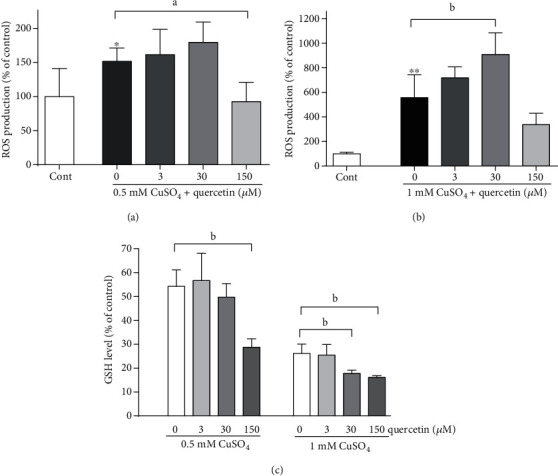Figure 3.

Effects of quercetin on ROS production and GSH levels in copper-mediated oxidative stress conditions. ROS levels were quantified by measuring fluorescence intensity after incubation with 2′,7′-dichlorofluorescin diacetate (DCF-DA). In P19 neurons exposed to 0.5 mM CuSO4, only the highest concentration of quercetin prevented a copper-induced increase in ROS production (a). In severely damaged neurons, 30 μM quercetin exacerbated a prooxidative effect of copper (b). 30 and 150 μM quercetin exacerbated a copper-induced decrease in GSH content (c). Data represent the mean ± SD from four independent experiments performed in quadruplets. aP < 0.05 and bP < 0.01 vs. the copper-treated group; ∗P < 0.05, ∗∗P < 0.0001 vs. control (one-way ANOVA followed by post hoc Dunnett's test).
